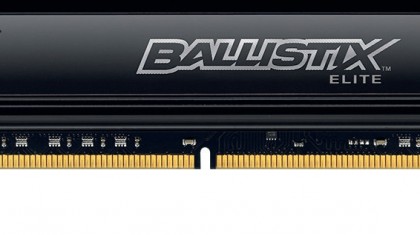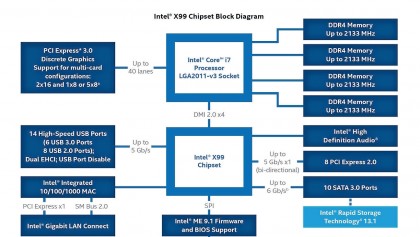Everything you need to know about upgrading your RAM
More baaang for your buck

Many PC owners won't necessarily need to ever update their RAM. But if one day you decide to, you might understandably make the assumption that adding faster and larger amounts of memory will allow your games and other applications to run faster.
However, perhaps surprisingly, that's not always the case. And that's exactly what we're looking in to here.
The memory landscape
Computer memory is divided into two main types: DDR3 and DDR4. The former is older, having debuted back in 2007, while the latter only hit the mainstream recently, with Intel's X99 platform in 2014.
They both work using the same principle: flash chips store data that the computer needs immediately, but it's lost when it's no longer useful or your PC is turned off.
It's governed by several common attributes: larger amounts mean more data can be stored, and higher MHz ratings mean memory runs at a faster speed, so data moves in and out quicker.

The newer standard, DDR4, has several advantages over DDR3. It runs at a higher frequency, so it's able to process your tasks at a faster rate. DDR3 is generally clocked between 1,333MHz and 2,400MHz, while DDR4 ranges from 2,400MHz to 3,200MHz.
It's possible to blur these lines with overclocking (forcing the processor to go at a faster speed), but, for the most part, DDR4 is faster. It balances those better speeds with chips have double the internal memory banks, faster burst access and higher data transfer rates.
Get daily insight, inspiration and deals in your inbox
Sign up for breaking news, reviews, opinion, top tech deals, and more.
DDR3 and DDR4 memory work with different motherboards and chipsets. Essentially, DDR3 is compatible with almost every motherboard and socket out there, but DDR4 is only compatible with boards using Intel's X99 chipset and LGA 2011 processor socket.
DDR4, however, does have a downside – increased latency (the time it might take to perform a task). Newer DDR4 2,133MHz memory has a latency rating of CL15, which means it'll take 14.06ns to perform a read, while DDR3 1,600MHz memory reads at 13.75ns.
That's a tiny margin, and DDR4 negates this disadvantage with its generally higher clock speeds. Nevertheless, if you'd like to keep an eye out, look for CAS ratings. This indicates latency, and lower is better. No matter which memory you buy, you'll have to deal with channels.
Dual-and quad-channel setups are the most popular and improve performance by allowing motherboards to use multiple channels to send and receive data simultaneously, therefore improving bandwidth. It's possible to run memory in single-channel mode, but there'll be a performance decrease if you run a single stick of memory rather than two or four.
The changing PC landscape
The variety of different specifications means that prices vary wildly. The cheapest 16GB DDR3 kits made from two 8GB sticks currently cost about £65 ($90, AU$130), but the most expensive can cost more than £200 ($279, AU$400).
It's a similar story with DDR4, which dual- and quad-channel kits also vary by huge amounts when it comes to price.
But these will always be more expensive than their DDR3 equivalents. Manufacturers claim that the increased speeds and better features provided by pricier memory will make a dramatic difference to performance. But we're not so sure, so we've set up some test rigs to try and find out just how much memory you really need.
Both of the test rigs we've set up use MSI motherboards. One uses Intel's Z79 chipset with a Core i7-4770K processor, while the other is an X99 PC with a Core i7-5820K chip. Both use operating systems installed on a Samsung 850 Evo SSD, and both use an Nvidia GeForce GTX 980 graphics card.
We've already mentioned the different processors and chipsets that work with DDR3 and DDR4, but there's more to choosing your components than just making sure your new gear is compatible on paper. Intel's Haswell architecture is behind the bulk of its current desktop processors, and it was its first to include native support for dual-channel memory, with up to 32GB of RAM.
It's used for chips that range from cheap Celerons and Pentiums to expensive Core i5s and i7s, and these desktop Haswell chips all plug in to the LGA1150 socket. The LGA 1151 socket is also DDR4-compatible.
Most Haswell-based processors are deployed with mobos that have Intel's H87, Z97 and Z87 chipsets. When it comes to memory support, they're all impressive. They handle four slots that accommodate two sets of dual-channel memory, and most full-size ATX boards also support 32GB or 64GB of memory at rapid speeds.

Support for faster memory
Intel has further developed its CPU architecture with Haswell-E. Processors that use this system also use the LGA2011 socket and X99 chipset, which means that support for DDR4 is included – and so, in turn, that means integrated support for faster quad-channel memory when compared to DDR3.
AMD's processors and APUs, meanwhile, use the Piledriver architecture. Its own memory controller was given a speed boost over the previous generation of AMD hardware, but memory support ultimately still isn't as good on this side of the fence. All of AMD's current chips support DDR3 memory, however, some of them are restricted to 1,600MHz or 1,866MHz memory, while only a handful top out at 2,133MHz.
Like Intel, these boards do support dual-channel memory. Processors and chipsets aren't the only bits of your PC that need to be checked before shelling out for new memory – motherboards are also vital. You'll need to make sure a board has the right number of slots.
You'll also need to check what amount and speed of memory it can accept: it's no good dropping a few hundred bucks on a 32GB 3,000MHz kit if your motherboard only goes to 16GB and 2,666MHz.
There are nuances to be examined, then, but for the most part, the memory landscape is heartening. No matter what processor, chipset or motherboard you use, you'll be able to equip a PC with plenty of high-end memory at decent speeds. That's good for anyone wanting to upgrade parts of their PC, but it's not necessarily great news for companies that rely on flogging expensive, high-end kits.
Future developments from Intel and AMD will only improve the situation. Intel's latest architecture, Skylake, will support DDR4 across all of its full-fat desktop chips, but it'll also be backward-compatible with DDR3, which adds a huge amount of versatility. We also expect to see improvements to the memory controller and support for larger amounts of memory running at faster speeds.
AMD isn't standing still, either. Its next proper desktop architecture is called Zen, and it'll offer full DDR4 support to bring the company's chips alongside Intel.
The first set of DDR3 benchmarks we locked and loaded were PCMark 8's Home, Creative, and Work tests – a trio of suites that simulate the kind of low-intensity tasks that take place on many systems, from web browsing and video chatting to word processing and spreadsheets.
Mike has worked as a technology journalist for more than a decade and has written for most of the UK’s big technology titles alongside numerous global outlets. He loves PCs, laptops and any new hardware, and covers everything from the latest business trends to high-end gaming gear.